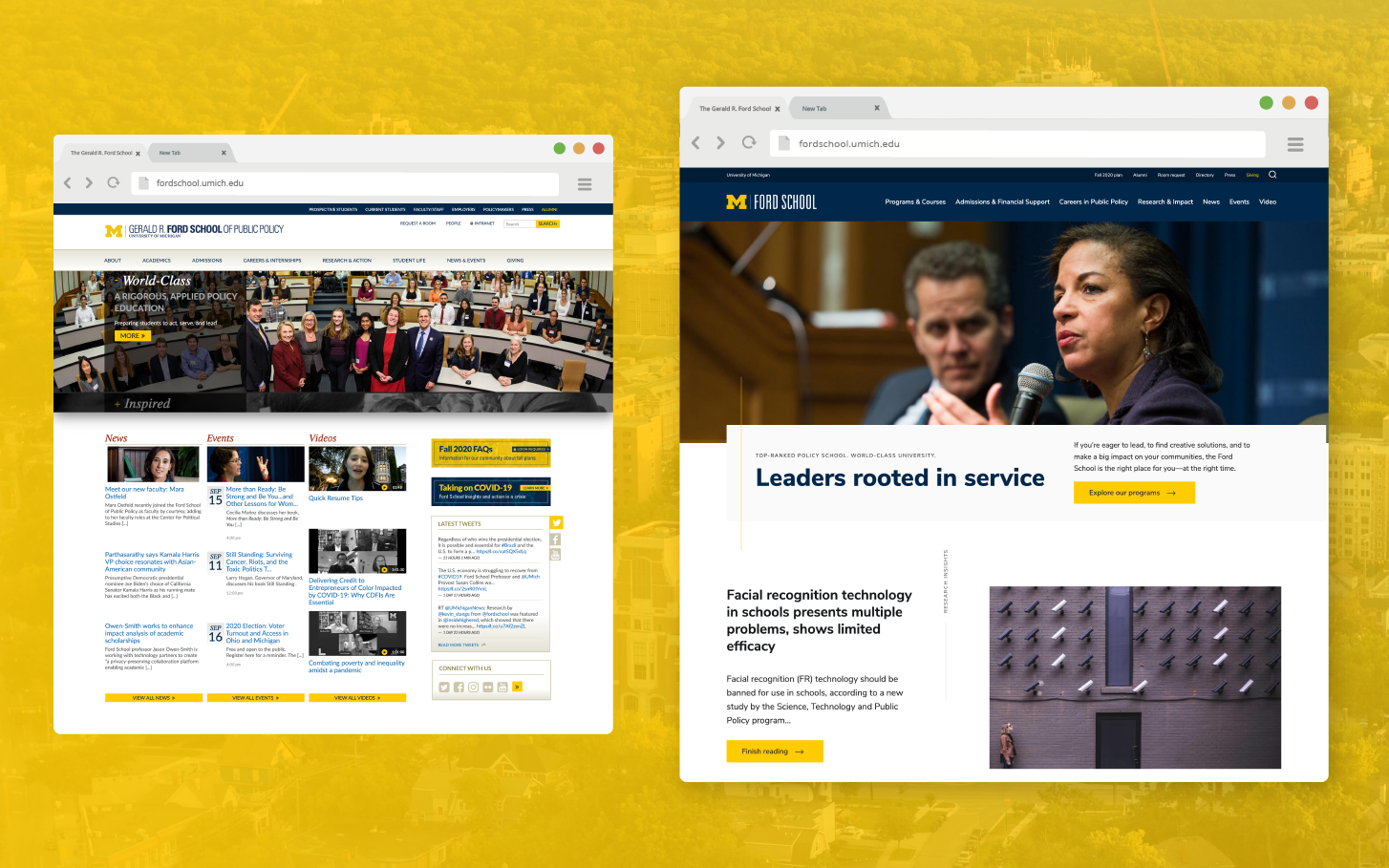
Just in time for the beginning of the fall 2020 semester, the Ford School launched its new website, providing the school with an inviting and modern look, a streamlined architecture, and a major technological upgrade.
“We wanted to have a site that represented the mission and vision of our school as a community dedicated to the public good,” said Ford School dean Michael S. Barr. “It was important, too, that our site convey the energy, innovation, collaboration, and impact that are hallmarks of our school. The new site beautifully captures who we are and how we go about our work.”
One new feature of the website is the inclusion of “Impact Areas”—portals that enable the Ford School to tell a collection of stories about key areas of work, starting with: Detroit, Democracy & Debate, Racial Justice, COVID-19, and Diplomacy. These impact areas will expand and rotate to highlight topics of deep interest to the Ford School, emerging strengths, and urgent issues of the day.
The website redesign project began in mid-March, just as the University moved to remote learning and work because of the pandemic. The core team who worked on the project were Chris Myers (project lead), Nick Pfost (design lead), Rebecca Cohen (content lead), and Laura K. Lee (communications director).
“The scale and the timeline of the project were daunting even as we interviewed vendors back in February,” said Lee. “And then came the pandemic, which upended our typical work patterns and added new responsibilities to the comms team’s plate.”
“Our core team, led by assistant director for digital strategy Chris Myers, worked very hard and supported each other along the way. They brought creative new ideas to life and delivered a beautiful site, on time and on budget. I’m excited about the storytelling possibilities the new site gives us.”
The Ford School contracted for the redesign with Palantir.net, a consultancy for complex digital systems founded in 1996 and based in Evanston, Illinois.
“We can’t say enough good things about Palantir’s work on our project,” said Myers. “They’re among the world’s leading Drupal developers, and their project management, design, and strategy services were all first-rate. Plus, they’re completely comfortable working remotely: it didn’t faze them at all to be working under a tight deadline in the midst of a pandemic. They truly were the perfect partner for this project.”
The process included strategy sessions and surveys of school leadership, alumni, students, and other stakeholders to help define a streamlined list of goals for the new site. “Using data helped us drive the process forward confidently,” said Lee. “And our collaborative approach is reflective of the Ford School community. Staff and faculty across the school gave their time to give input, offer story ideas, gather quotes, proofread, check links, and more—we’re grateful for the help!”
In addition to the impact areas, the new site puts a spotlight on Ford School alumni, telling a number of stories of how they are using their policy education to take on pressing challenges across the world. The site also allows prospective students to visit the school virtually through 360-degree photos & videos and numerous pictures of Weill Hall. Other features improve accessibility, event registration, videos, and faculty directory pages.
The Ford School’s website redesign was generously supported by the Office of the Provost, and by gifts from Jim Hudak (MPP '71), Ian and Nancy Ashken, Liz Schrayer, and the Kresge Foundation through a designated gift by Steve Hamp.